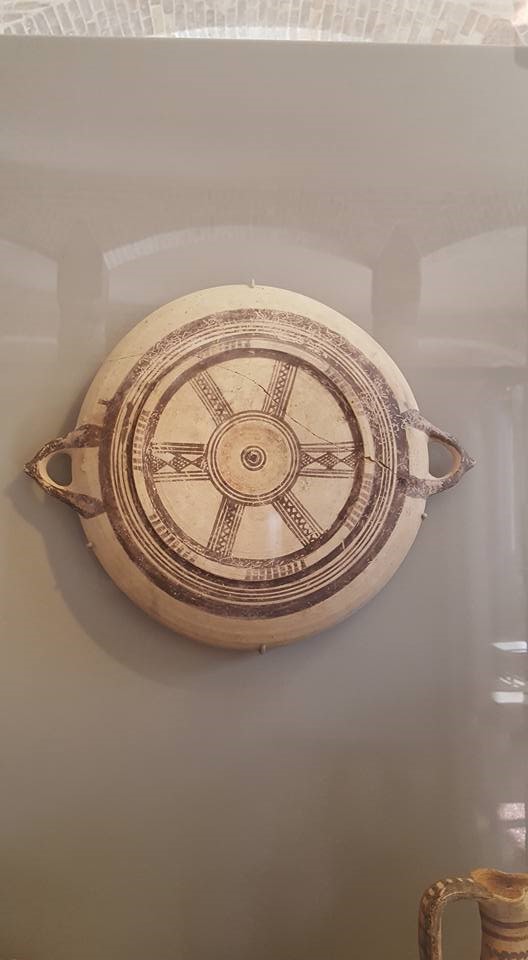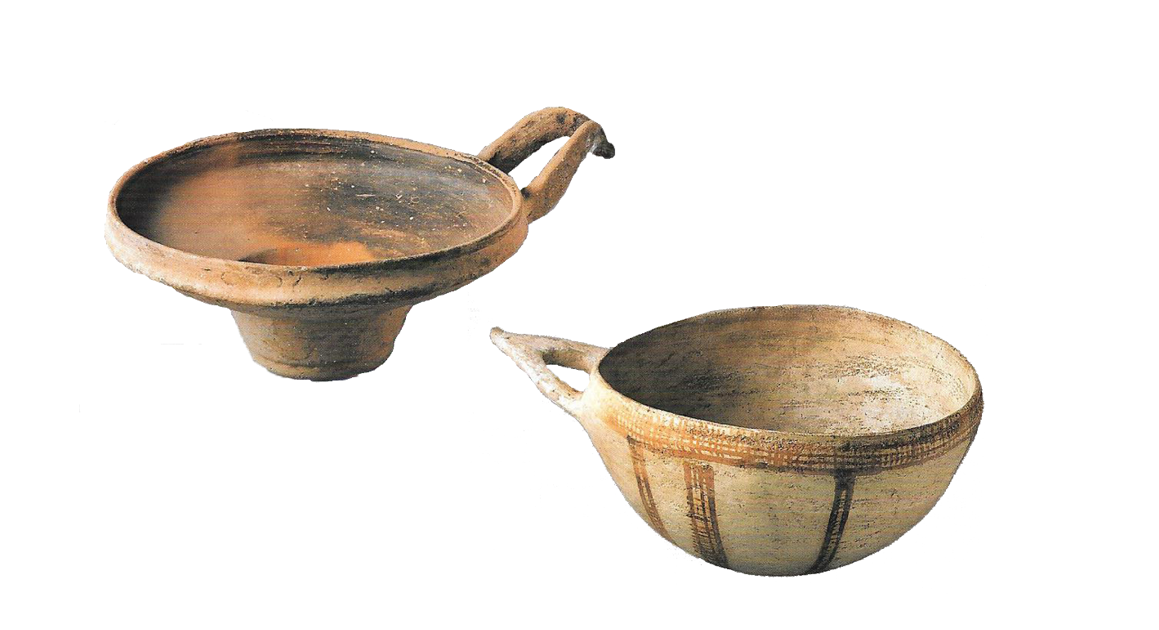A significant advantage of providing 3-D images is that they allow different sides of the object to be viewed. This bi-chrome plate (dated to the Cyprio-Geometric period (1050-750 BCE) is on display in the Neues Museum, Berlin (Fig. 1). A close parallel is found in the Bridges collection at the University of St Andrews (Fig. 2).


A key feature of these bi-chrome plates is the fact that the underside of the plate is significantly more ornate that the face of the plate. When displaying a flat object like this, it is difficult to show the two sides. Find out more about Cypriot pottery and similar examples here.
In the Neues Museum, there is no way to see the underside of this particular example (Fig. 3), but they have displayed a second example of a bichrome plate face down to reveal this (Fig. 4). The problem here is that without more detailed and specific labelling it is difficult to relate the two sides and thereby understand the significance of the sparsely decorated surface and richly decorated underside. In our display, we show the underside (Fig. 5) with a note about the limited decoration on the top side. But this is not terribly satisfactory. Making a 3-D image available of the plate allows a more enhanced understanding of the object. Many of these plates have been found in tombs, for example Episkopi-Bamboula, ‘Site D’, tomb 44 (see the British Museum) and at Kythera (see Europeana collections). Elaborate decoration on the underside but not the top indicates a ritual purpose; perhaps the undersides were intended to be viewed by the dead/or gods. The burial context may indicate too that the plates were used during ritual dining connected with funerary rites.



Our detailed experiments throughout the Through a Glass Darkly project have shown that providing different types of sensory opportunities (such as 3-D, feely boxes, as well as in a glass case) to experience the material, even in the same space, enables the visitor to enjoy more and make a more accurate assessment of the function of the object. We particularly noted how visitors would move back and forth between the different formats to assess and apply what they had learned from the different sensory experiences.
Explore some of the 3D models of objects in the Bridges Collection on our Sketchfab page.
Article written by Professor Rebecca Sweetman, School of Classics, University of St Andrews.
